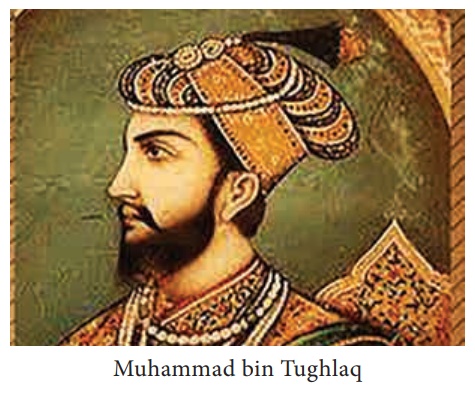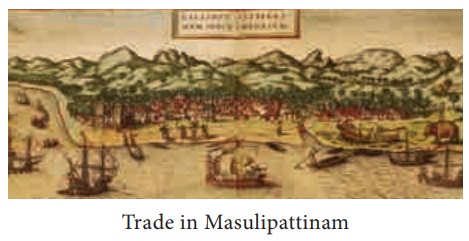State and Society in Medieval India | History - Political Changes (1000ŌĆō1700) | 9th Social Science : History: State and Society in Medieval India
Chapter: 9th Social Science : History: State and Society in Medieval India
Political Changes (1000ŌĆō1700)
Political Changes (1000ŌĆō1700)
(a) North India: The Advent of Islam
Muslim rule was
established in Delhi at the end of the 12th century by Muhammad Ghori,
but did not expand much beyond this core region for another hundred
years. Muslim merchants and rulers were known in India for several centuries
even prior to this. Arab Muslim merchants had been trading in the ports of the
west coast, especially Kerala, as early as the 9th century. Similarly, Muslim
invaders from west Asia had set up Sultanates in Gujarat and Sind since the 8th
century. However, these contacts did not lead to any widespread exposure to
Islam or Muslim rule in the rest of the country.
The impact of Muslim
rule was felt during the reign of Alauddin Khalji (1296-1316 A.D.
(C.E.)) who sent military campaigns to the south. The primary objective was to
plunder the wealth, rather than to expand his territory. Devagiri (near
Aurangabad) was captured by Alauddin Khalji. Renamed Daulatabad, it was the
second stronghold of his growing kingdom. Alauddin KhaljiŌĆÖs slave and
commander, Malik Kafur, was sent on military expeditions further south in the
first decade of the 1300s A.D. (C.E.).
The Tughlaq kings who
came after Alauddin also sent their armies to the south. As a result, the
generally more isolated southern part of the country came into the orbit of the
rulers of the north. Governors were appointed in various provinces in the
Deccan region, and a Sultanate was even established in Madurai.

During the reign of
Muhammad bin Tughlaq, there was a revolt in Daulatabad. Alauddin Bahman Shah
set up the Bahmani sultanate in 1347 A.D. (C.E.), with his capital in Bidar.
The Bahmani kingdom survived for nearly a century and a half, mainly due to the
able administration of Mahmud Gawan, a great statesman and loyal
minister. After his death, many viceroys declared their independence, and by
the end of the fifteenth century, five sultanates came up in the Deccan:
Bijapur, Golkonda, Ahmednagar, Berar, and Bidar. Bijapur and Golkonda were the
largest of these sultanates and the region entered a phase of considerable
economic growth and expansion of trade. The Deccan sultanates were conquered by
Aurangzeb in the 1660s A.D. (C.E.), and the entire region, as far south as
Madras (Chennai) became a part of the Mughal empire.
![]()
![]()
![]()
![]()
(b) The Chola Empire in the South
The territorial
expansion of the Chola empire began under Rajaraja I. The Pallava
kingdom had already been assimilated into the Chola kingdom. The Pandya kingdom
remained independent, but was subservient to the Cholas. The empire expanded
further under Rajendra I who had successfully taken his armies as far to
the northeast as the river Ganges. He had also sent naval expeditions against
the Sailendra Kingdom of Sri Vijaya (in Indonesia), Kadaram (Kedah) and Ceylon.
This earned him the title ŌĆ£the Chola who had conquered the Ganga and KadaramŌĆØ (gangaiyum
kadaramum konda cholan). Ceylon remained a province of the
Chola empire for a few decades. The empire was further consolidated through
marriage with the eastern Chalukyas under RajendraŌĆÖs grandson Kulottunga I,
and extended up to the border of Orissa.
Maritime trade with
south-east Asia and China expanded greatly during the Chola period. The
continued interaction with Tamil merchants resulted in the spread of the
influence of Indic culture and art into south-east Asia, as seen in the
magnificent temples of Angkor Wat in Cambodia.
(c) Vijayanagar and South India after the Cholas
The Chola Empire began
to decline after the middle of the 13th century. The last known Chola emperor
was Rajendra III. The empire died out in 1279 A.D. (C.E.). Several power
centres came up after this in the region. Further to the south, the Pandya
kings again sought to regain the glory they had lost under the Cholas. Many
brilliant Pandya kings like Jatavarman Sundara Pandyan ruled at the end of the
13thcentury. Further to the north was the Hoysala kingdom, with its capital at
Belur and later Halebidu. This kingdom extended through much of the present day
state of Karnataka. The Kakatiyas ruled from Warangal (Telangana) while the
Yadavas ruled in Devagiri until Devagiri fell to Alauddin KhaljiŌĆÖs forces at
the end of the 13th century. These states did not exist in peaceful
cooperation, and the region was beset by many internal wars and conflicts.

The establishment of the
kingdom (subsequently empire) of Vijayanagar was the most momentous development
in the history of south India in the medieval period. The kingdom was
established by Harihara and Bukka, two brothers. They were the first rulers of
the Sangama dynasty. They founded a new capital city on the southern banks of
Tungabhadra which they named Vijayanagara (city of victory). Harihara was
crowned in 1336 A.D. (C.E.). The Sangama dynasty ruled Vijayanagar for nearly
one and a half centuries. This was followed by the Saluva dynasty which was in
power only for a brief period. The Tuluva dynasty then succeeded as rulers.
Krishnadeva Raya, the greatest ruler of Vijayanagar, belonged to this family.
As the empire expanded,
kingdoms to the south, such as the Hoysalas and the Tamil region, were also
assimilated into Vijayanagar. The rulers of Vijayanagar were almost
continuously at war with the Bahmani sultanate as well as with the Religous
based kingdoms of Kondavidu and Orissa. Finally, the combined forces of the
five Deccani Sultanates defeated Vijayanagar in 1565 A.D. (C.E.) at the Battle
of Talikota. The Vijayanagar emperors then shifted their capital further south
to Penugonda, and eventually to Chandragiri near Tirupati. The empire (or what
remained of it) finally withered away in the middle of the seventeenth century.
(d) The Mughals (1526ŌĆō1707 A.D. (C.E.))
The Mughal empire was
founded by Babur in 1526 A.D. (C.E.) after he defeated Ibrahim Lodi at Panipat.
The first six Mughal emperors are referred to as the ŌĆśGreat MughalsŌĆÖ.
Aurangzeb was the last of the great Mughals. Akbar consolidated the Mughal
empire through conquests and through a policy of conciliation with the
Religious based kingdoms of Rajasthan. The Mughal empire though began to
disintegrate after Aurangzeb, continued to exist nominally till 1857 A.D.
(C.E.) when the British finally ended the virtually non-existent empire.
A new power centre rose
in Maharashtra in the seventeenth century, and the Marathas under the
leadership of Shivaji seriously undermined the authority of the Mughals
in western India. At its height, the empire stretched over most of the Indian
sub-continent. Only the south-western region of Kerala and southern Tamilnadu
were not directly under Mughal rule.
(e) The Arrival of the Europeans
During the fifteenth
century the Europeans were pre-occupied with trying to find a direct sea route
to India, bypassing the overland route through west Asia and the Mediterranean.
The spice trade from India was controlled by Muslims up to Alexandria. By
gaining direct access to India the Europeans could exercise more direct control
over the spice trade and obtain the spices at more favourable prices. In 1498
A.D. (C.E.), Vasco da Gama landed on the Kerala coast having sailed around the
Cape of Good Hope in South Africa. Barely five years later, the Portuguese
built their first fort at Cochin in 1503 A.D. (C.E.). Goa was captured in 1510
A.D. (C.E.) and became the centre of the Portuguese state in India. Because of
their naval superiority, the Portuguese were able to conquer many ports from
east Africa up to Malacca, and could effectively control the maritime trade
over the entire region.

Other European nations
soon followed the Portuguese, most notably the Dutch, English and French. The
activities of the latter were carried on through the respective East India
Companies. While these were all private trading enterprises, they all had a
strong political agenda. During the seventeenth century, when Mughal authority
was still powerful, the European companies were able to trade in the Mughal
empire, but could not have their own territorial base within the boundaries of
the empire. In South India, however, political authority was fragmented and
much less cohesive, and they had their own enclaves over which they exercised
complete authority. The Dutch were in Pulicat (and later Nagapatnam), the
English in Madras, the French in Pondicherry and the Danes in Tarangampadi
(Tranquebar).
Related Topics